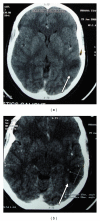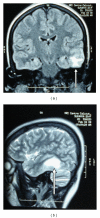Cerebral vein thrombosis misdiagnosed and mismanaged
- PMID: 22567255
- PMCID: PMC3337512
- DOI: 10.1155/2012/210676
Cerebral vein thrombosis misdiagnosed and mismanaged
Abstract
Cerebral venous thrombosis (CVT) should be considered in the differential diagnosis of all unexplained CNS disorders of sudden onset. Etiological factors are often subclinical forms of several common thrombophilic states occurring together, rather than the typical inherited and rare causes. Diagnosis is missed because of the heterogeneity in clinical presentation and etiological factors. In several patients with the so called idiopathic CVT nutritional deficiencies and lifestyle issues are more important factors in pathogenesis, rather than single rarer causes. High index of suspicion is the key to diagnosis. Clinical skill has to be fine tuned to diagnose the problem and to identify all the etiological factors. Radiology is essential for diagnosis but relying on radiology alone will lead to missing several cases and even erroneous diagnosis. It is inappropriate to proceed prematurely to laboratory investigations, forgetting proper clinical evaluation by studying diet, lifestyle, and environment of the patients. Success in managing lies in identifying all the contributory causes and correcting all of them giving excellent outcome almost always. Clinical observations based on case series and sharing of such information alone are the means to arrive at a consensus in diagnosis and management.
Figures






References
-
- Schaller B, Graf R. Cerebral venous infarction: the pathophysiological concept. Cerebrovascular Diseases. 2004;18(3):179–188. - PubMed
-
- Bousser MG, Chiras J, Bories J, Castaigne P. Cerebral venous thrombosis—a review of 38 cases. Stroke. 1985;16(2):199–213. - PubMed
-
- Canhão P, Ferro JM, Lindgren AG, Bousser MG, Stam J, Barinagarrementeria F. Causes and predictors of death in cerebral venous thrombosis. Stroke. 2005;36(8):1720–1725. - PubMed
-
- Sasidharan PK, Mohammed A. Cortical vein thrombosis due to acquired hyperhomocyseteinemia. The National Medical Journal of India. 2009;22(6) - PubMed
-
- Coutinho JM, Ferro JM, Canhão P, et al. Cerebral venous and sinus thrombosis in women. Stroke. 2009;40(7):2356–2361. - PubMed
LinkOut - more resources
Full Text Sources
